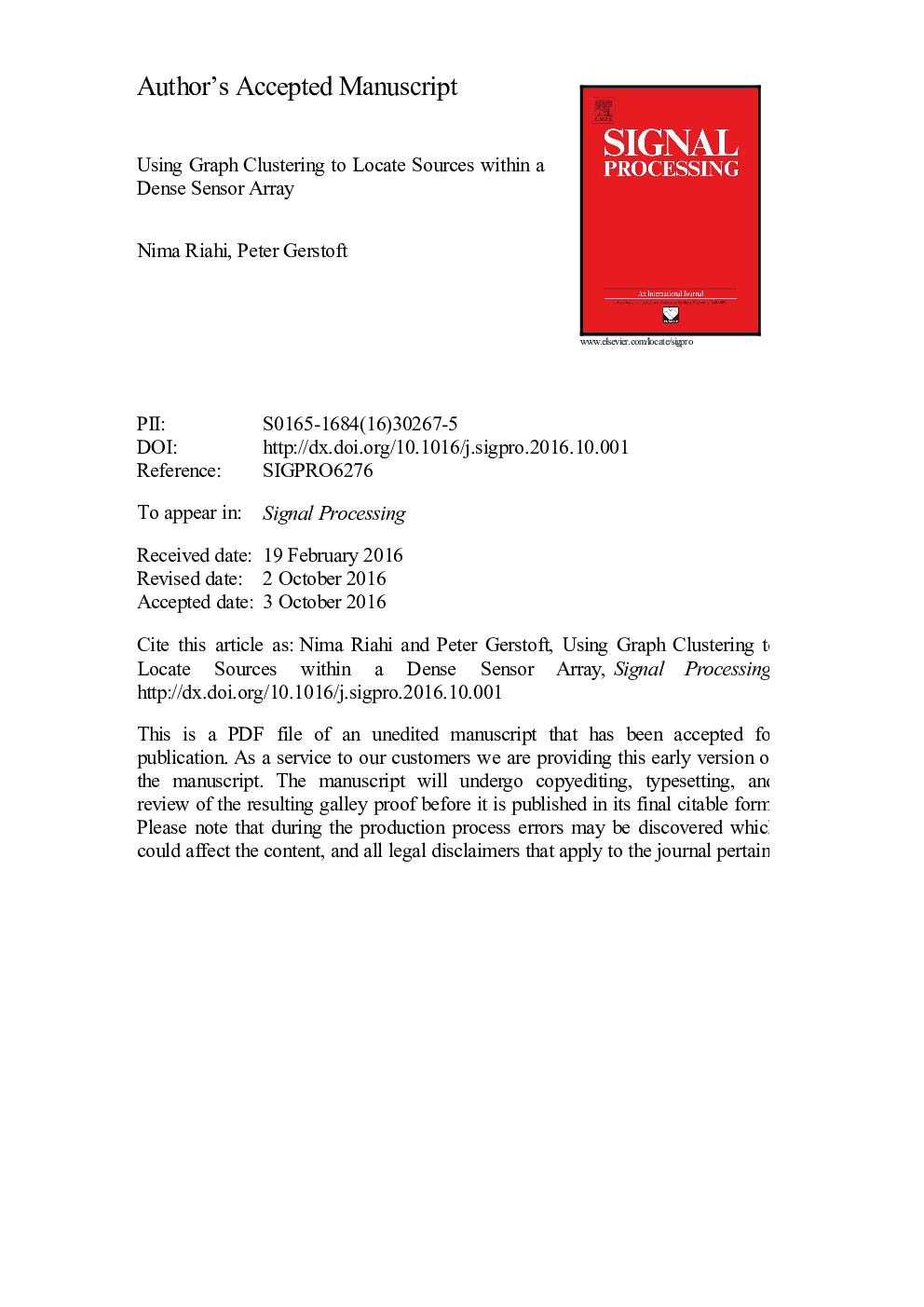| Article ID | Journal | Published Year | Pages | File Type |
|---|---|---|---|---|
| 4977530 | Signal Processing | 2017 | 15 Pages |
Abstract
We develop a model-free technique to identify weak sources within dense sensor arrays using graph clustering. No knowledge about the propagation medium is needed except that signal strengths decay to insignificant levels within a scale that is shorter than the aperture. We then reinterpret the spatial coherence matrix of a wave field as a matrix whose support is a connectivity matrix of a graph with sensors as vertices. In a dense network, well-separated sources induce clusters in this graph. The geographic spread of these clusters can serve to localize the sources. The support of the covariance matrix is estimated from limited-time data using a hypothesis test with a robust phase-only coherence test statistic combined with a physical distance criterion. The latter criterion ensures graph sparsity and thus prevents clusters from forming by chance. We verify the approach and quantify its reliability on a simulated dataset. The method is then applied to data from a dense 5200 element geophone array that blanketed 7kmÃ10km of the city of Long Beach (CA). The analysis exposes a helicopter traversing the array and oil production facilities.
Related Topics
Physical Sciences and Engineering
Computer Science
Signal Processing
Authors
Nima Riahi, Peter Gerstoft,
